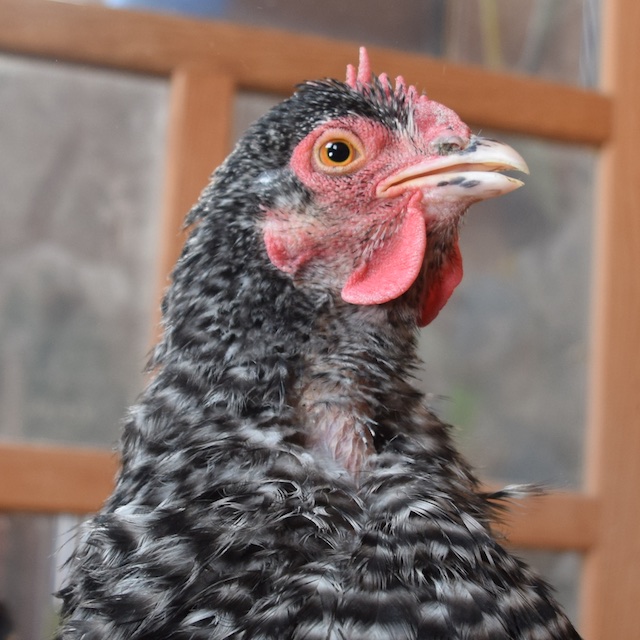Bird flu. We knew that it’d get here eventually, and after years of watching and testing, and feeling relief that it wasn’t yet on this continent, we’re now seeing cases in the Northwest.
There are many iterations of bird flu (also known as avian Influenza or AI). They’re all highly infectious viral diseases, which means that they spread rapidly from bird to bird. Bird flu is most often spread from migratory wildfowl to domestic flocks, but can also travel via manure on boots and in car treads. Chickens exposed to avian influenza suffer from respiratory disease. Some AI is low pathogenic, which means that exposed birds get mildly sick, and perhaps have a reduction in productivity. Some AI strains are highly pathogenic, which means that the birds rapidly become ill and mortality is high. Currently, the two strains that have appeared in North America are H5N2 and H5N8. H5N2 and H5N8 do not cause disease in humans, however, they can wreck devastation on a farm.
Most avian viruses don’t infect people, and that’s true for AI, too. Of all of the avian influenza viruses, only two are known to infect and sicken humans. These are the ones that you hear the most about in the news because they have caused several hundred human deaths. Look closely at these cases, and you find that the stricken people were often exposed to large quantities of diseased dead birds in unsanitary live poultry markets, or they were collecting feathers from dead wildfowl. There has been no human-to-human transmission. Nor is there a risk when eating properly cooked eggs and meat.
The poultry industry is rightly worried about this virus spreading. They have a lot of animals at stake. Some barns house 50,000 hens, and exposure to the virus means that all of the birds have to be culled and the farm quarantined. The industry would like to use AI as an excuse to control and restrict backyard chicken flocks, using the argument that infection will spread from a free-ranging flock to their businesses. I don’t believe that a hen on a suburban lot is a threat to them. It’s far more likely that a wild bird will be the vector. Also, there’s some research that the virus is more lethal in the conditions found in industrial agriculture. However, we must be prudent and responsible. If migratory wildfowl congregate on your property, keep you hens fenced away from where the geese and ducks roam. Don’t let your hens forage under wild bird feeders, or, better yet, don’t feed the wild birds. Do your best to keep sparrows and other birds out of your coops (don’t allow nesting in the eaves.) Practice good biosecurity. If you visit a friend’s flock, disinfect your shoes and wash your clothes when you come home. Have farm boots to lend out when people come to your backyard. Not all respiratory diseases seen in chickens are avian flu, but if you suddenly have several chickens die rapidly from breathing difficulties, (death happens 48 hours after the first symptoms are noticed) call your state agriculture department to find out about testing. It’s a horrible thought, but if you do have avian flu on your premises, you’ll need to cull your entire flock. This is important for your neighbor’s hens and for the health of wild birds. If you don’t, your chickens will be an on-going source of the disease and will spread it to wild birds (falcons and eagles have succumbed) as well as other flocks. Recently, even a zoo, who’s mission is to protect rare species, had to cull birds infected with AI.
Chickens, like the rest of us, are susceptible to, and get numerous ailments. We live in a world filled with pathogens. A hermetically-sealed chamber wouldn’t keep us safe, besides, that would be no way to live. Avian influenza is simply another health risk that we have to watch out for. Be prudent and use commonsense.


Good information! I do have a sparrow problem, I moved the feeder out of their area but maybe I should stop feeding them, just feel bad doing that, but my neighbors feed so they wont starve.
You don’t have to feed sparrows :)
Thanks so very much Terry. As you know we are worried about it here in Whatcom County,Washington State in the Pacific Northwest. We have not had any new reports of the disease. We are 25 minutes from the farms in British Columbia that had to cull their commercial hens…Right now we have migrating flocks of geese and swan flying through to nest in our area ponds and lakes of which there are many here…I have taken your advice and am being very careful….so far so good..though the sparrows are a big problem, I don’t feed them but cannot seem to keep them out of my chicken pens…we are going to work on that this summer…a new project:).Take care Terry and may spring and the dirt appear soon…
Try hanging CDs or that sparkly mylar tape that orchardists use to keep birds away. When it sparkles in the sun it confuses and scares the wild birds. Your hens might worry about it for a day, but then they’ll get used to it.
Thanks Terry, well researched and informative as usual. As I have said we have got it about 50 miles from us so keeping fingers crossed and watching closely. :)
Yes, fingers crossed!
CNN will have us all dead by noon tomorrow if they get wind of this. ;-)
I’ve been shocked and relieved by how under the radar this flu outbreak has been.
When I built my chicken yard, i enclosed it totally with 1/2″ hardware cloth. It covers the entire yard … up the sides and even across the top. I did this, originally, to help keep out predators, but after reading your article, now I know that it’ll keep out any wild birds too. Hopefully, that will help keep the bird flu from my flock … hope so, anyway. Also, you are right when you say that the industry would like to use it as an excuse to control and restrict backyard flocks, but, as you say, they would use that as only an excuse … they have more reason to worry than we do!
Hardware cloth will keep the sparrows out. Good job!
Thanks, Terry … that means a lot coming from you!
That is so scary. Hope it doesnt infect any backyard flocks!
Thanks for this great information, Terry. And perhaps timely, also. I noticed that we are now getting back flocks of sparrows that were absent during the past two months. I keep throwing rocks at them when they congregate on my neighbor’s trees. Your info seemed timely because last Wednesday my Red star got infected with what I assumed was respiratory illness, standing up with close eyes, no energy, a tiny liquid out her nostrils. Immediately quarantined her from the other girls, and gave her the epsom bath, a dosed of olive oil, and some antibiotics on bread. By Saturday, she seemed recovered and let her back with others, by Tuesday, I think she was back to about normal. Today, we had quite a big surprise…one egg (out of four) was very tiny, but normal in every respect. The size is about a third of normal size egg. Couldn’t tell whose egg this was, my suspicion being it came from the Red Star. Any ideas what happened? Sorry for the long story.
We are in Vancouver, WA.
Red Stars tend to get into laying problems by their 3rd year of lay. Do a HenBlog search (button on the right of this page) for “wind eggs.” That’s the little egg. Sometimes when hens are in distress over laying, they’ll sound like they have a respiratory ailment.
Hi Terry, just done some checking and the strain 50 miles from us is H7 which is low risk but, the strain 300 miles away was the H5N8. I also agree it can be very scary when they over exaggerate to frighten people to make news !! It is highly infectious but, with good biosecurity, a lot of commonsense and a splash of luck we can try to keep our feathered friends safe :)
Been reading lots more and getting lots of confusing data, giving me a headache !! Going to stop reading and just keeps girls as safe as I can :)
That’s the attitude!
Hello Terry, thank you so much for answering my question about the “wind eggs”. As you mentioned on your past blog, “wind eggs” do not have yolks in them, but our tiny eggs did have a proportionate amount of yolk. Strange. Gave all the girls some bread today soaked in olive oil and some sour cream. Perhaps this might tip the balance back to normalcy in egg size. Again, thanks for all the info.
Re: the avian flu, I’ve read a comment in another blog stating that presumable, these were propagated by the commercial chicken industry to increase the doses and types of antibiotics being fed to these chickens. This is a very interesting presumption.
The flu is viral, antibiotics target bacteria. The industry doesn’t want to increase the amount of antibiotics that they use, and if they did, this wouldn’t be a way to go about it. But, what is known is that when you have tens of thousands of stressed animals, that illness spreads and decimates quickly.